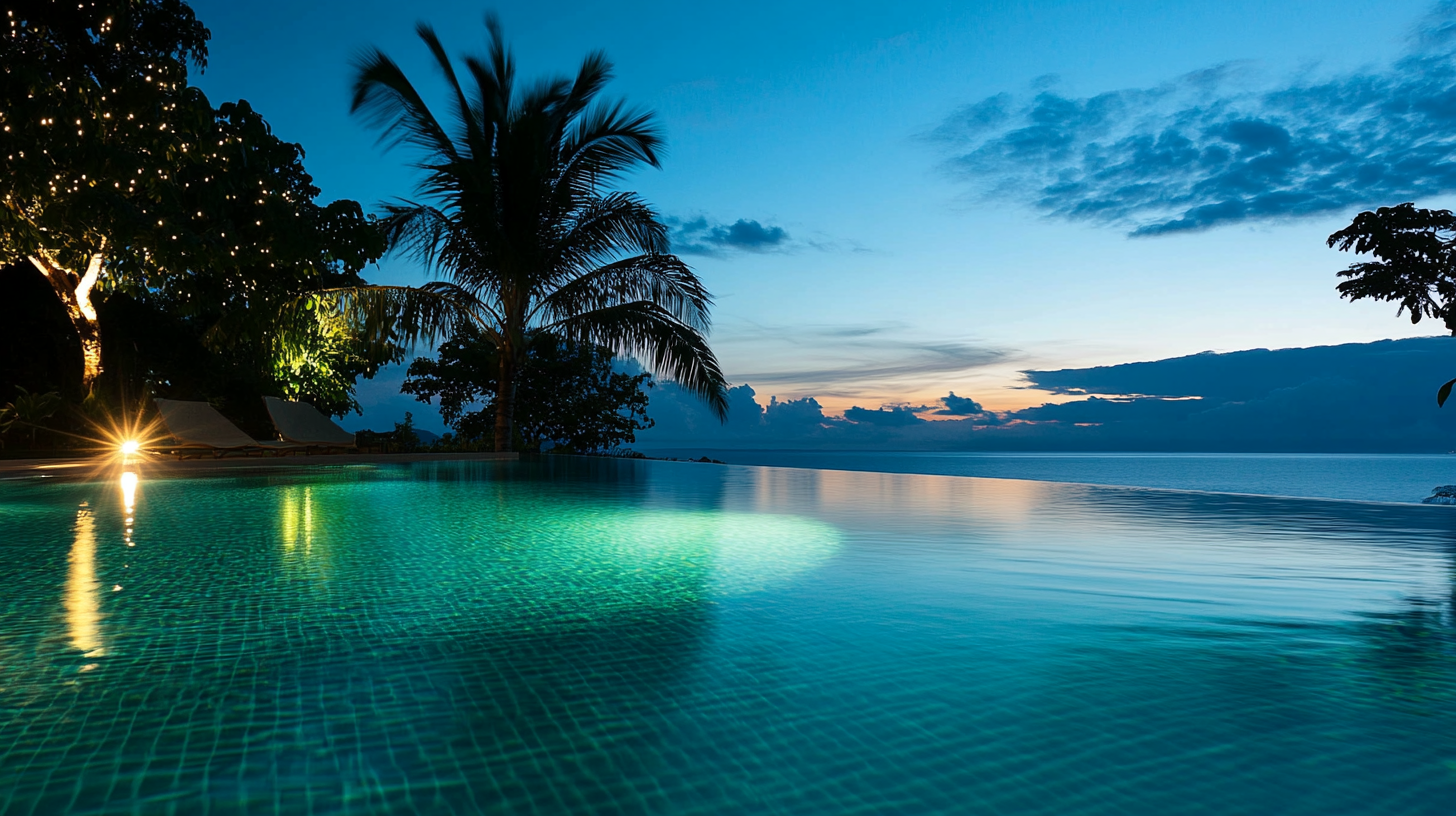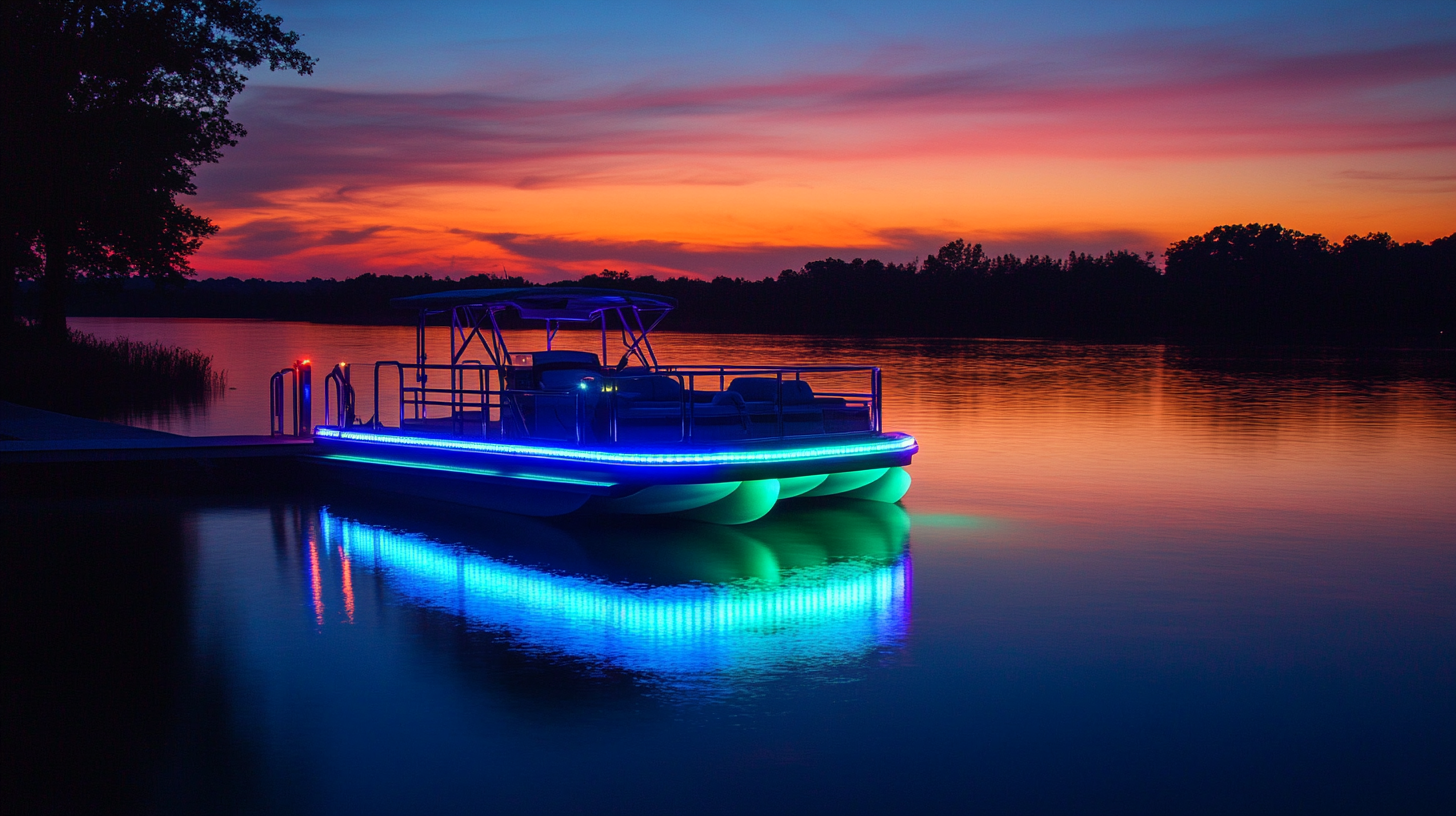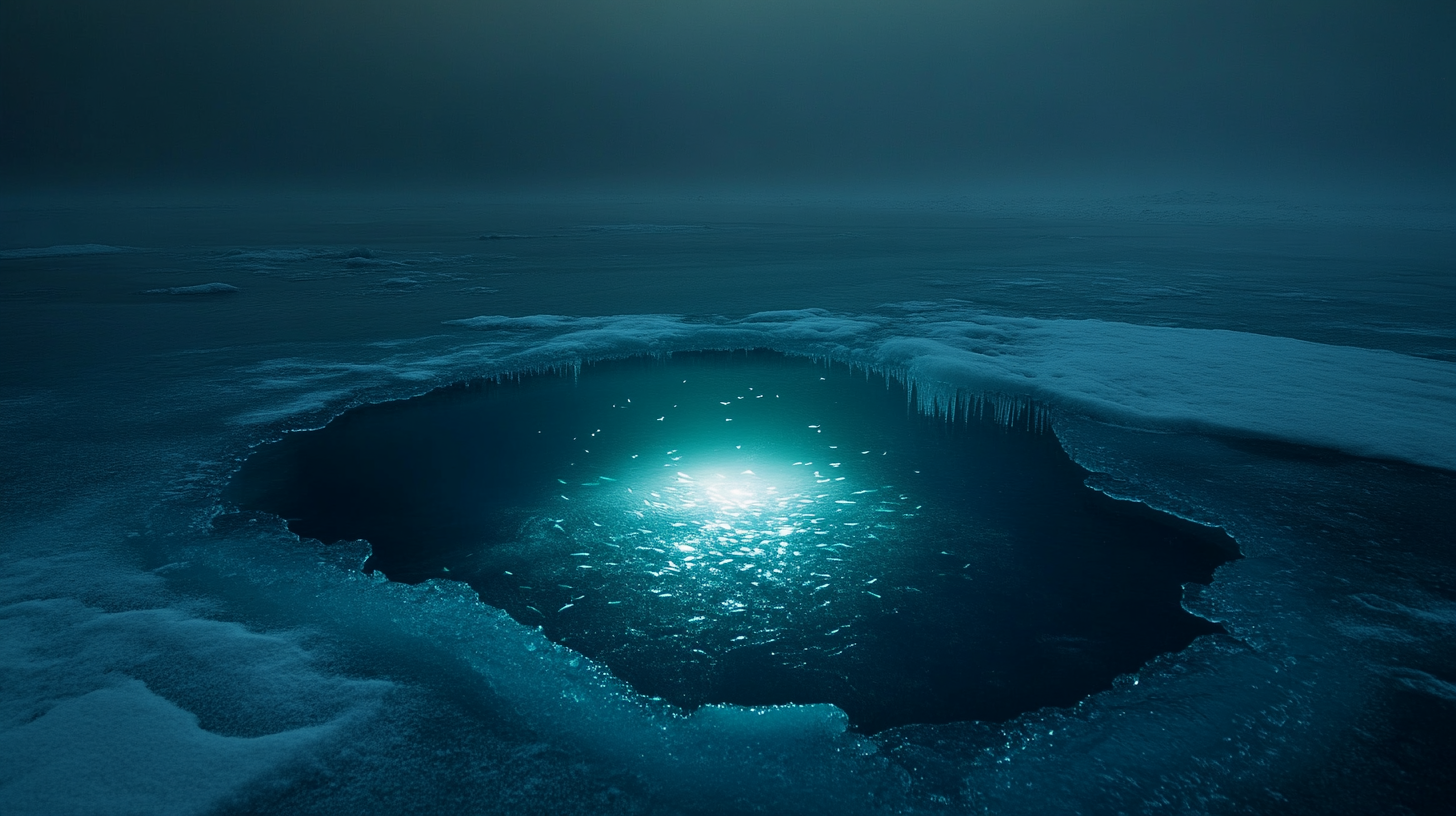Underwater pool lights for different climates
When it comes to setting the perfect mood in your pool, choosing the right type of underwater pool lights can be both exciting and essential. There are several types of lights available, each with their unique features and benefits, and it’s worth considering how they perform in different climates. Let’s dive into some of the most popular options.
Halogen lights: These traditional lights have been around for years. They’re typically the more cost-effective option upfront, and they provide a nice, warm glow that can transform any pool into an inviting oasis. However, while halogen lights are durable, they tend to consume more energy compared to other types, making them less efficient, especially in colder or harsher weather conditions.
LED lights: By far the most popular choice for modern pools, LED underwater lights offer superior energy efficiency and longer lifespans. They’re available in a wide range of colors and brightness levels, allowing homeowners to customize their pool ambiance at the touch of a button. These lights are also ideal for maintaining energy savings year-round, regardless of whether your swimming pool is located in a hot desert climate or a colder mountain region. LEDs tend to generate less heat, so they hold up exceptionally well in warmer zones, where extreme temperatures can overwork traditional lighting systems.
Fiber optic lights: If you’re looking for something a little more unique, fiber optic pool lights provide another creative way to illuminate your pool. These lights stay out of the water — the light box is located outside the pool and shines light through fiber optic cables that run into your pool. This makes fiber optic lights an excellent choice for those looking for easy maintenance, but they might not provide as much brightness as halogen or LED alternatives. These lights may not be ideal for areas with strong seasonal weather shifts, as they tend to lose efficiency in extreme environments.
Regardless of your choice, it’s important to keep in mind how different types of lights will behave in different climates. While one option might work perfectly well in a temperate region, another might be better suited for areas with extreme heat or cold. Always consider the local weather patterns when planning your pool lighting setup to ensure they shine bright all year round!
Climate considerations for underwater lighting
When considering underwater pool lights for your pool, the climate in your area should play a big role in your decision. The weather conditions can have a significant impact on the performance, longevity, and efficiency of your pool lighting system. Whether you’re living in a tropical paradise with high humidity or enduring freezing winters, certain climates can put different kinds of stress on underwater lights, making it vital to choose an option that’s well-suited for your specific environment.
In warmer, humid climates, for example, heat, moisture, and corrosion can quickly become issues if your pool lights aren’t built to handle these conditions. In areas like Florida or southern California, where both the temperature and humidity are often high, LED lights stand out as a great option as they generate minimal heat and handle moisture much better than traditional halogen lights. The reduced heat emission also helps to prevent overheating, ensuring that your pool lights won’t be overworked. Areas with a high salt content in the water, such as coastal towns, require lights that are resistant to corrosion, meaning that stainless steel housings or other corrosion-resistant materials are a must. Without the proper materials, underwater fixtures can easily tarnish or rust, decreasing your lights’ lifespan.
On the flip side, in climates with cold winters, pool lights need to be able to endure freezing temperatures. Halogen lights can work, but their energy consumption tends to go up in colder weather, which makes them less efficient. LED lights once again prove to be favorable in harsher conditions due to their energy-saving properties, as they don’t draw unnecessary power just to remain functional in freezing settings. Lights that are not adequately designed for cold weather may become brittle and prone to cracking, especially when ice forms around pool surfaces. If your region experiences extreme temperature fluctuations, you’ll want to make sure your lights are installed with materials that expand and contract without causing damage. Proper insulation of the lighting fixture is also essential to prevent water from freezing inside the light housing.
For those in places with unpredictable weather — one season is bone-dry, while another is full of monsoons — adaptability is key. You may want to invest in lighting systems with automation options to ensure the proper brightness and timing depending on the weather. Whether you want to save energy during the hot months or maintain an inviting glow despite a rainstorm, smart systems can handle a wide variety of conditions. For regions with heavy rainfall or flooding possibilities, waterproofing and durability are vital, and certain lights are more equipped to handle those challenges than others.
Ultimately, understanding climate factors helps you choose pool lights that last longer, perform better, and reduce maintenance costs. The next section will dive deeper into how energy efficiency is influenced by different weather conditions and how to maximize your lighting setup year-round.
Energy efficiency in different weather conditions
Energy efficiency is a fundamental concern when it comes to underwater pool lights, especially when you consider how the weather in different climates can influence power consumption. Depending on where you live, seasonal changes — and even daily variations — can shift how your lighting system operates, and it’s important to adapt accordingly if you want to balance efficiency with performance.
In warmer climates, particularly regions with intense heat, energy efficiency is directly tied to the light’s ability to remain cool. Fortunately, LED lights are wildly popular in areas like the American Southwest or Mediterranean regions, where day-to-day temperatures soar. LEDs generate less heat compared to traditional lighting like halogen, which not only extends their lifespan but also prevents the pool area from heating up unnecessarily. This reduction in overall heat output means fewer instances of lights overheating and burning out. Moreover, their energy consumption is significantly lower, allowing you to keep the pool glowing all night without worrying about your electricity bill skyrocketing in the middle of a scorching summer.
However, cold climates present an entirely different challenge. When temperatures drop, many lighting systems must work harder just to function correctly. Halogen lights, for instance, tend to drain more energy in chilly weather, as they require more power to maintain a constant temperature. LEDs, again, shine as an optimal choice for energy-conscious pool owners in colder regions, such as the northern United States or Scandinavia. Their low power consumption coupled with their durability under freezing conditions makes them a top pick. Because they don’t pull extra energy to stay on, LEDs won’t burden your home’s power supply, saving you money during those long winter nights.
For those in humid or tropical environments, moisture in the air can also affect the efficiency of pool lights. While one might think moisture only damages external fixtures, the truth is consistent exposure to water vapor can weaken the internal components of many types of lights, decreasing efficiency over time. LED systems, which are better at resisting moisture intrusion, maintain their energy-saving status even in muggy environments. Additionally, in climates with fluctuating humidity — where rainy seasons alternate with periods of dry heat — the ability of certain lights to maintain efficiency while withstanding environmental stressors is particularly valuable. In these regions, having pool lights that minimize energy use while staying functional through monsoons or dry spells is crucial to keeping both maintenance needs and electricity costs low.
Another factor to consider is seasonal lighting use. In temperate climates where weather can vary greatly throughout the year, energy-efficient lighting allows you to keep your pool flickering all year long, rather than just in the active summer months. Automated systems help conserve power by adjusting brightness levels based on the time of day or weather conditions, cutting back on unnecessary lighting during peak sunlight hours, for example. If you’re using fiber optic or traditional halogen lights in these regions, however, expect your energy consumption to fluctuate with the seasons more dramatically, especially during winter months when the days are shorter, and temperatures drop.
Lastly, coastal regions, whether warm or cold, present a unique challenge: saltwater. In order to maintain energy efficiency, your underwater pool lights need to be highly resistant to potential damage from salt exposure. Corroded fixtures or electrical components can quickly turn into energy guzzlers, as the system struggles to compensate for weakened internal parts. It’s not enough to pick lights just based on their initial energy rating – you also have to ensure they’re made from materials like stainless steel or heavy-duty plastic that are corrosion-resistant, keeping those energy savings intact for the long haul.
To get the most out of your pool lights in different climates, it’s vital to factor in how your local weather can affect energy use. Thoughtful planning can save you from unnecessary energy consumption and ensure your pool stays ready for use year-round without hiking up the costs – or sacrificing that perfect evening swim ambiance!
Waterproofing and durability for various climates
When selecting underwater pool lights, evaluating their waterproofing capabilities and durability in different climates is a critical step to ensure longevity and safety. Pool lights are not only constantly immersed in water but also subjected to external weather conditions, making them vulnerable to wear or failure if inadequately protected. This is where appropriate waterproof ratings and construction materials come into play, as they help the lights withstand environmental challenges in various regions.
The key to meaningful waterproofing for underwater systems is the Ingress Protection (IP) rating, which signifies the level of moisture and dust resistance offered by the light fixture. For underwater pool lights, it is recommended to select units with a minimum IP68 rating. Fixtures with this level of protection are designed to tolerate continuous water immersion, making them ideal for both fresh and saltwater pools. IP68-rated lights can typically go deeper into the water without the risk of malfunction or water seepage, a much-needed feature in climates where pools are exposed to flooding or heavy rainfall.
| Climate Type | Ideal Waterproofing Measures |
|---|---|
| Humid & Tropical | Corrosion-resistant materials like stainless steel or copper alloy, plus high IP ratings (IP68) |
| Cold & Subzero | Temperature-resistant materials (plastic, PVC), enclosed fixtures with water-proof seals |
| Coastal & Saltwater Exposure | High corrosion resistance, IP68-rated lights with marine-grade stainless steel components |
The durability of your pool lights relies significantly on the materials used in their construction. In humid climates, where organisms like algae can thrive inside lighting fixtures and moisture poses a constant risk, great emphasis should be placed on selecting corrosion-resistant materials. Fixtures built from marine-grade stainless steel or brass are particularly resistant to rust and tarnishing caused by prolonged exposure to moisture or salt. However, not every metal suffices in high-humidity climates—copper alloys or powder-coated aluminum often provide added layers of protection for internal components against oxidation.
For cold or icy climates, choosing fixtures made from materials that can withstand freeze-thaw cycles is crucial for longevity. Lights made from durable plastics or PVC are less prone to cracking and water damage than metals, which can sometimes warp or weaken under low temperatures. Freezing water expansion can corrode fixture seams or cause cracks in less durable lights, so ensuring that your lights are housed in strong, sealed enclosures, is especially important for climates with frequent winter storms or freezing temperatures.
When considering coastal environments, the presence of salt in the water adds another layer of concern. Even in cases where salt doesn’t enter a freshwater pool, the salty air can still cause corrosion of external fixtures. In these regions, corrosion-resistant designs, like lights with heavy-duty plastic housings or stainless steel-grade exteriors specifically treated for saltwater resistance, are imperative. These installations maintain structural integrity and extend the lifespan of underwater lighting systems even during prolonged exposure to briny conditions.
Finally, regardless of the climate, power connections and junction boxes should also be thoroughly waterproofed. Improper sealing around cords or connectors can allow water seepage into the electrical system, leading not only to light malfunctions but potential safety risks. In flood-prone regions or for homeowners who experience regular heavy rainfall, it’s critical to ensure your pool lights come with double-sealed gaskets or similarly robust sealing mechanisms.
By taking into account both waterproofing standards and material durability when choosing pool lights for different climates, owners can reduce maintenance and replacement costs while ensuring their lights safely perform under all weather conditions.
Maintenance tips for climate-specific pool lighting
No matter where you live, one thing’s certain: proper maintenance is crucial to keeping your underwater pool lights in top shape and shining bright year-round. However, depending on where your pool is located, the climate can considerably affect the type of upkeep your pool lights will need to ensure they stay functional, safe, and efficient over time. A few extra steps here and there, tailored for your specific climate conditions, can go a long way toward extending the lifespan of your pool lights and preventing unnecessary headaches.
In hot, arid climates, such as desert regions, dust and heat can become your pool light’s worst enemies. Pools in these areas frequently deal with fine particles that can settle on the underwater light fixtures, reducing the brightness and causing lights to overheat. To combat this, clean your lights more frequently, about once per month or more during dust storms. A soft cloth works well for this, along with a pool-safe cleaner that won’t damage the casing. Heat can also impact the materials of your pool lights, so make sure to check the gaskets to ensure they are not cracking or becoming brittle under intense sunlight. Regularly inspect the fixtures for signs of overheating—LED lights are generally better in these climates, but they still need some monitoring to ensure they are performing efficiently.
If you’re located in a tropical or humid region, you’ll need to watch out for two main enemies: moisture and corrosion. Constant exposure to high humidity, combined with possible saltwater (if you’re near the coast), can lead to corrosion of the fixtures over time. One easy tip is to apply a light coating of protective lubricant (preferably silicone-based) around the fitting seals, O-rings, or screws. This prevents water and humid air from seeping into the light’s internals and protects metal or stainless-steel parts from corrosion. Additionally, regularly wiping down the lights will help clear any algae or debris that loves to thrive in warmer water. Depending on your pool’s usage and the season, aim for a cleaning schedule of every couple of months, though pools in high-humidity zones might require monthly check-ups.
For those who brave cold winters with their pools, the challenge lies in ensuring your underwater lighting fixtures can withstand freezing temperatures. The biggest concern in cold climates is water seeping into the lights and freezing, which can cause the fixtures to expand and crack. Before winter sets in, check the waterproof seals thoroughly to ensure no cracks or gaps have appeared. If you plan to use your pool during the winter months, make sure the lights are cleared of ice buildup, especially around the edges of fixtures where water may accumulate before freezing. Consider investing in freeze-resistant underwater pool lights, which are designed with colder environments in mind. If you winterize your pool by shutting it down, be sure to drain all water from your light housings to prevent any freezing damage over the off-season.
In coastal regions or areas with saltwater pools, corrosion is once again a top concern. Salt is notoriously tough on all kinds of materials, including underwater lighting fixtures. It’s crucial to check your lights for signs of rust, particularly if they are stainless steel-based. Although stainless steel is resistant to corrosion, it’s not immune. Wipe down the lights regularly with a soft cloth, and use an anti-corrosion spray on metal components like screws and bolts to add an extra layer of defense. It may also be worth investing in lights specifically designed to handle saltwater conditions, as they tend to have stronger corrosion-resistant coatings and more robust materials.
Lastly, for homeowners located in areas with unpredictable weather—including heavy rain, snow, and fluctuating seasons—versatility and resilience are your best friends. Storms can kick up mud, leaves, and other debris into the pool, which can dim your lights over time. After each heavy storm or rainfall, check your lighting system for potential debris buildup and clean the lights as needed. Equally important, fluctuating temperatures can expand and contract the light housings, so regularly ensuring that your housing is still water-tight is imperative. Inspect the seals for any cracks or wear, and replace them promptly if any damage is detected. Automated controls can help reduce energy and wear during unpredictable weather. Having a timer or dimmer system can further assist in maintaining efficiency, automatically adjusting the lights when weather anomalies occur, and preventing overheating or overuse.
By following these climate-specific maintenance tips, you can keep your underwater pool lights glowing brightly, no matter what Mother Nature throws your way! Regular upkeep and inspections help avoid costly repairs, and more importantly, ensure that your pool remains a beautiful, illuminated escape in different climates.


